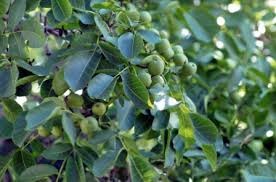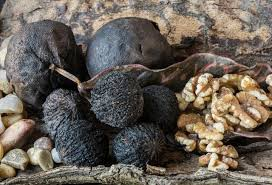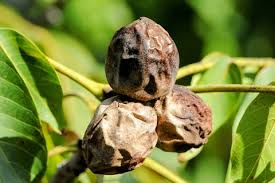Many people, like me, grew up around black walnut trees (Juglans nigra) without knowing about their potentially harmful effects on nearby plants. As a child, I enjoyed gathering the nuts from fallen husks for baking, unaware of the chemical secret they harbor. It wasn’t until I began landscaping my own homestead that I encountered the true impact of these trees—especially on our apple trees. Despite thriving pears, cherries, and plums, our apple saplings began to wither and die, leading me to discover juglone toxicity.
What Makes Black Walnuts Toxic?
The culprit behind this phenomenon is juglone, a potent chemical compound found in black walnuts and related species like hickories and butternuts. Black walnuts are especially notorious for releasing high concentrations of juglone from their roots, leaves, and even their nuts. This natural defense mechanism helps the tree thrive, but it can be toxic to many plants around it.
How Juglone Affects Sensitive Plants
When plants come into contact with juglone, they may exhibit several signs of toxicity. Initially, it can appear as though plants have another disease, such as cedar apple rust. However, when symptoms like wilting, yellowing leaves, stunted growth, and even death begin to appear, especially near black walnut trees, the problem is likely juglone poisoning. While there’s no cure for this toxicity, the best solution is to avoid planting sensitive species near black walnut trees, particularly within a 50-foot radius.

Which Plants Can Survive Near Black Walnuts?
Not all plants are vulnerable to juglone toxicity. Some trees, shrubs, and vegetables show a surprising resilience. If you look at the natural habitat around black walnuts, you’ll find a number of species thriving despite the presence of juglone.
- Tolerant Trees: American elm, black cherry, dogwood, maple (except silver), oak, and sycamore are examples of trees that can withstand juglone exposure.
- Tolerant Shrubs and Bushes: American holly, azaleas, junipers, elderberries, and witch hazel are among the shrubs that can handle juglone.
- Tolerant Fruits and Vegetables: Beans, cherries, melons, onions, and stone fruits like peaches and plums are safe to grow near black walnuts.
- Tolerant Flowers and Vines: Many flowers, including daisies, sunflowers, iris, and violets, can thrive despite juglone.
If you’re unsure about specific plants, the Penn State Extension provides comprehensive lists of juglone-tolerant species.
What to Do if You Have Established Gardens Near Black Walnuts
For those with established gardens or orchards that can’t be moved, there are strategies to mitigate juglone’s effects. While the success rate is low, you can try the following:
- Physical Barriers: Installing fences or netting can help keep tree debris like leaves, nuts, and seeds from touching sensitive plants.
- Raised Beds: Consider planting in raised beds with soil that hasn’t been affected by walnut roots. This will protect the plants from juglone exposure.
- Soil Care: Ensure good drainage and proper watering. Flushing the soil occasionally may dilute juglone’s toxicity, but it’s not a guaranteed fix. Keeping plants outside the 50-foot radius is the best approach.
Why Keep Black Walnut Trees?
Despite their challenges, black walnut trees provide valuable ecosystem services. They offer shade, wind protection, and, of course, their delicious nuts. Removing a walnut tree can be a difficult decision, especially if your property is small. Be mindful that walnut roots can release juglone for years, even after the tree is removed. If you choose to keep a walnut tree, taking precautions to manage its effects on surrounding plants is key.

Do you have a black walnut tree on your property? Have you found ways to make your garden and orchard thrive despite juglone toxicity? Share your experiences and thoughts in the comments below.
